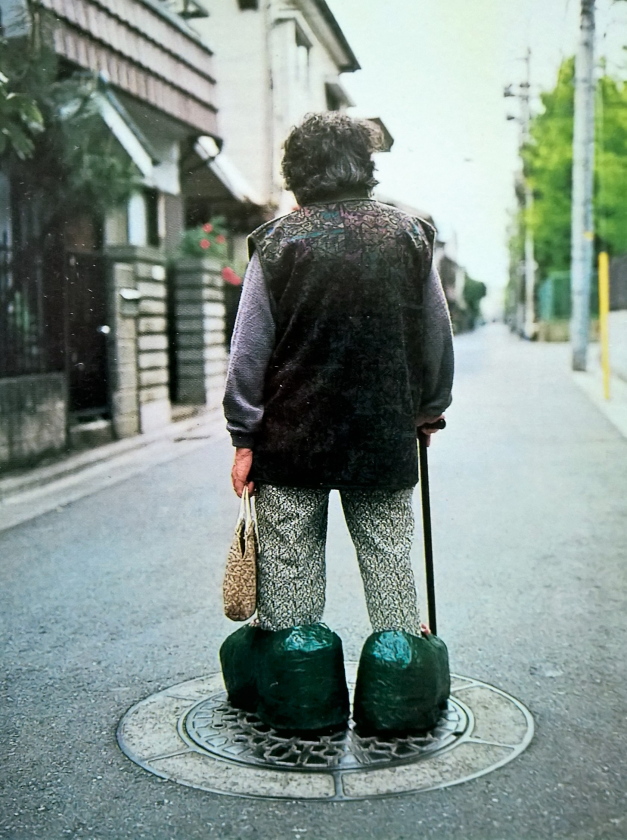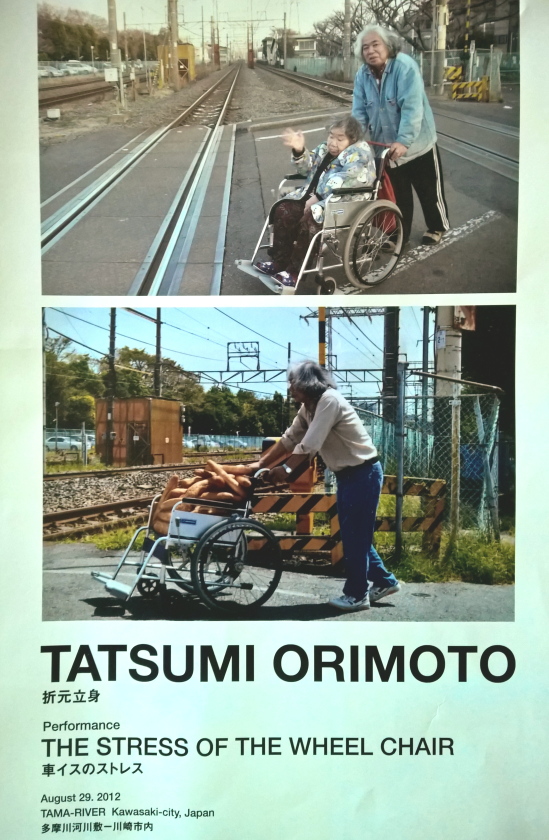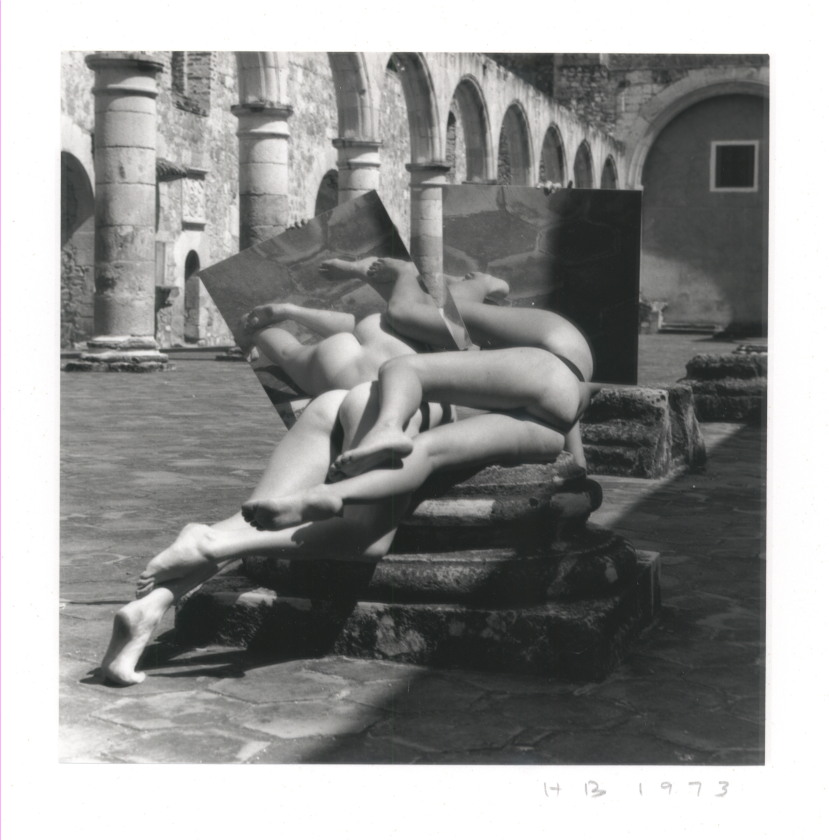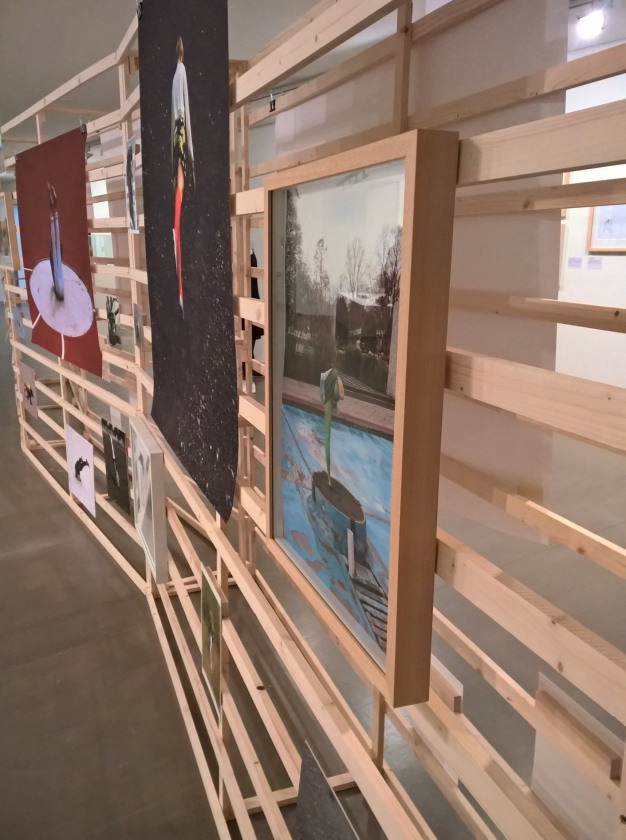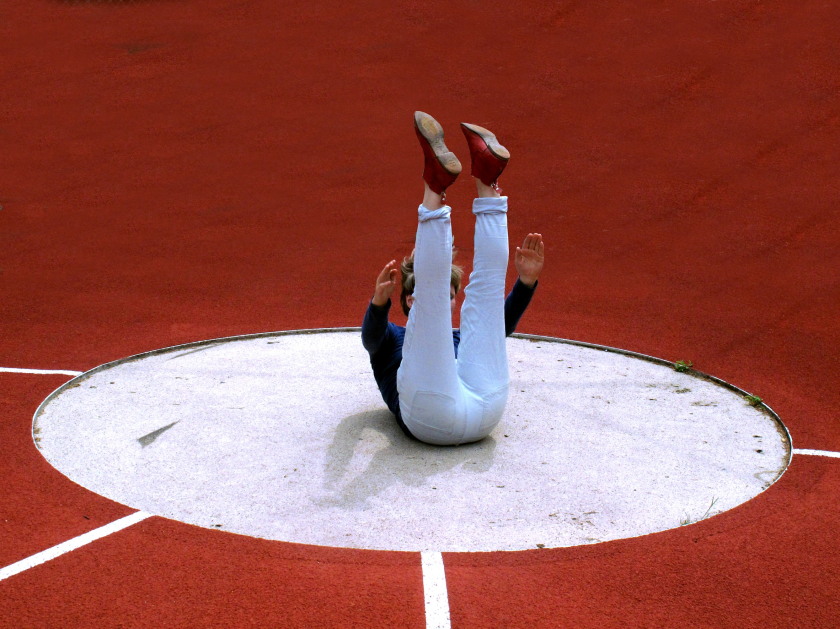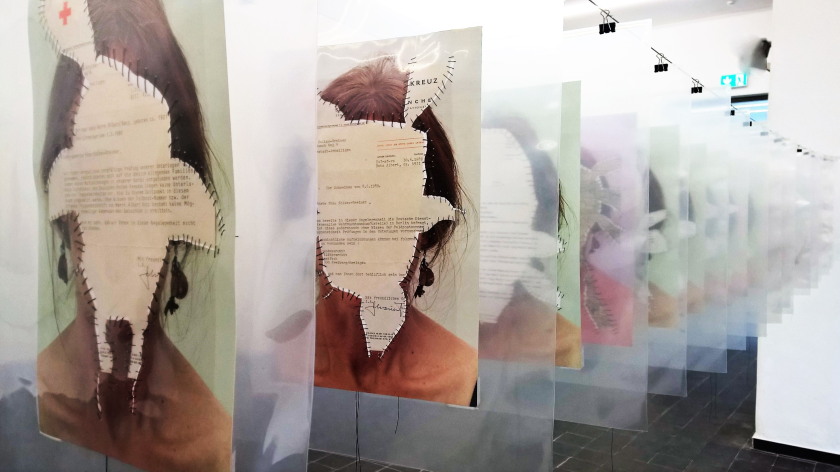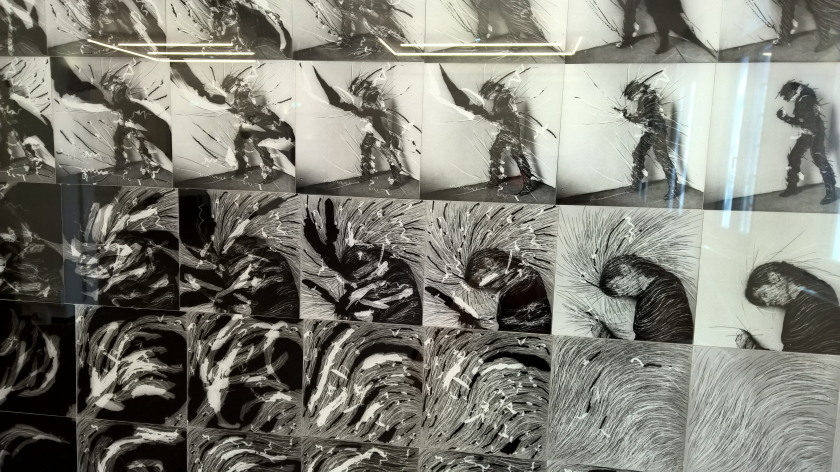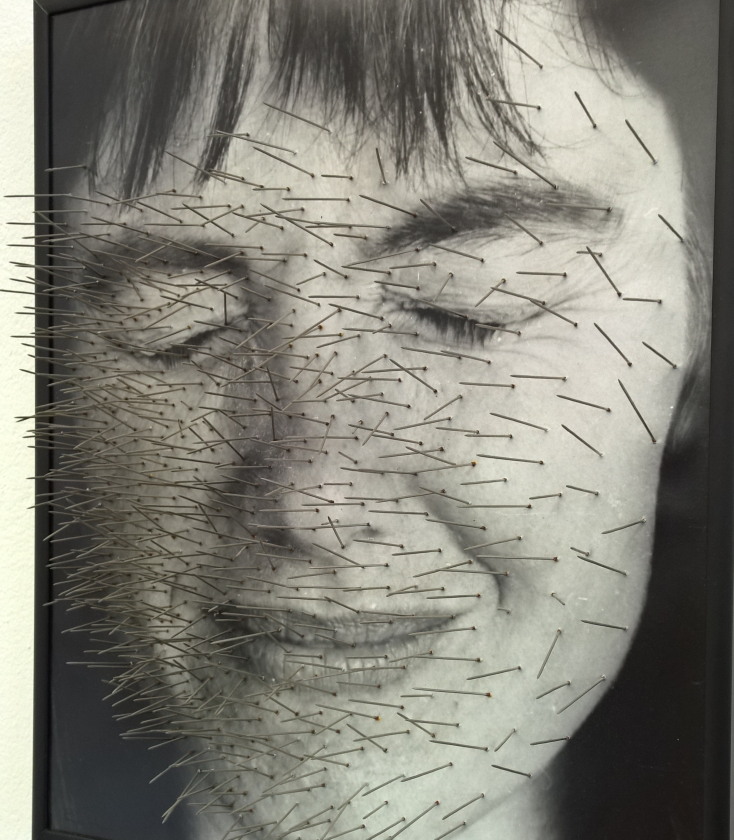One of the longest experiments Life-Art came to an end Thursday, May 25th 2017. Odai Orimoto, better known as “Art-Mama”, died at the age of 98 in Kawasaki-City. She has become part of the art-world, since Japanese Fluxus-Artist Tatsumi Orimoto included her in his Life-Art in 1996 and launched photoprints of “Tire-Tube-Communication” showing Odai with neighbors in her garden and in her living room.[1] It seemed slightly disturbing to the audience, to see three old ladies with tires as necklaces, and later also “Art-Mama”
with gigantic custom-made shoes. But Orimoto’s work is about the burden of getting old and feeling one’s body as a weight, which becomes heavier and heavier every year. These aspects of the mature body, which have never been reflected by Body Art were introduced by Tatsumi Orimoto for the first time in art history. He started this unique artistic collaboration with his mother who was suffering from depression and Alzheimer’s disease and it lasted for 21 years. The whole artistic production of that period was labelled “Art-Mama” and focuses on the aesthetic implications of the growing number of elderly people in many contemporary societies. Beside the physical self-awareness it deals with the shrinking field of vision, deteriorated hearing and haptic sensations.
The last time, that Odai appeared in a public performance, was at a lunch for 50 grandmas in the Kawasaki-City-Museum in 2006. After that Orimoto spent more and more time taking care for his mother. Nevertheless he travelled in Japan and abroad, to show his new work (see several articles in this blog – just tick on Orimoto, Art-Mama and other key-words of this article like artist’s mothers) which he produced at home including his mother as usual and experimenting with new objects and tools related to his care-taking like diapers and wheelchairs.
Last year Orimoto appeared as a woman’s drag as “Art-Mama” by himself. Here he investigates the field of similarity and imitation not only of facial expression but also on body-language and habits as a topic in the arts.
[1] The first European shows of this series was realized by Aktionsgalerie in Berlin in 1999 and Fotogalerie Wien in April 2000 (Catalogue # 160, Vienna 2000)

